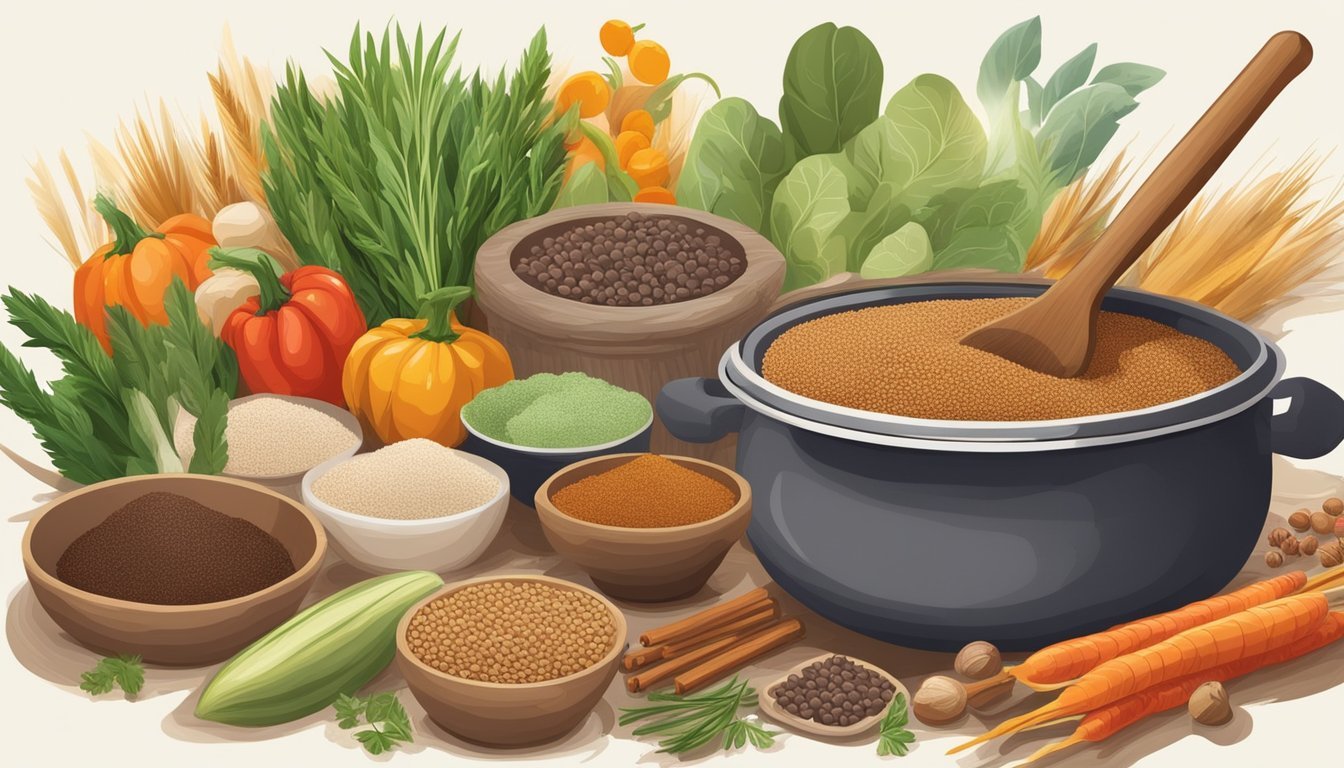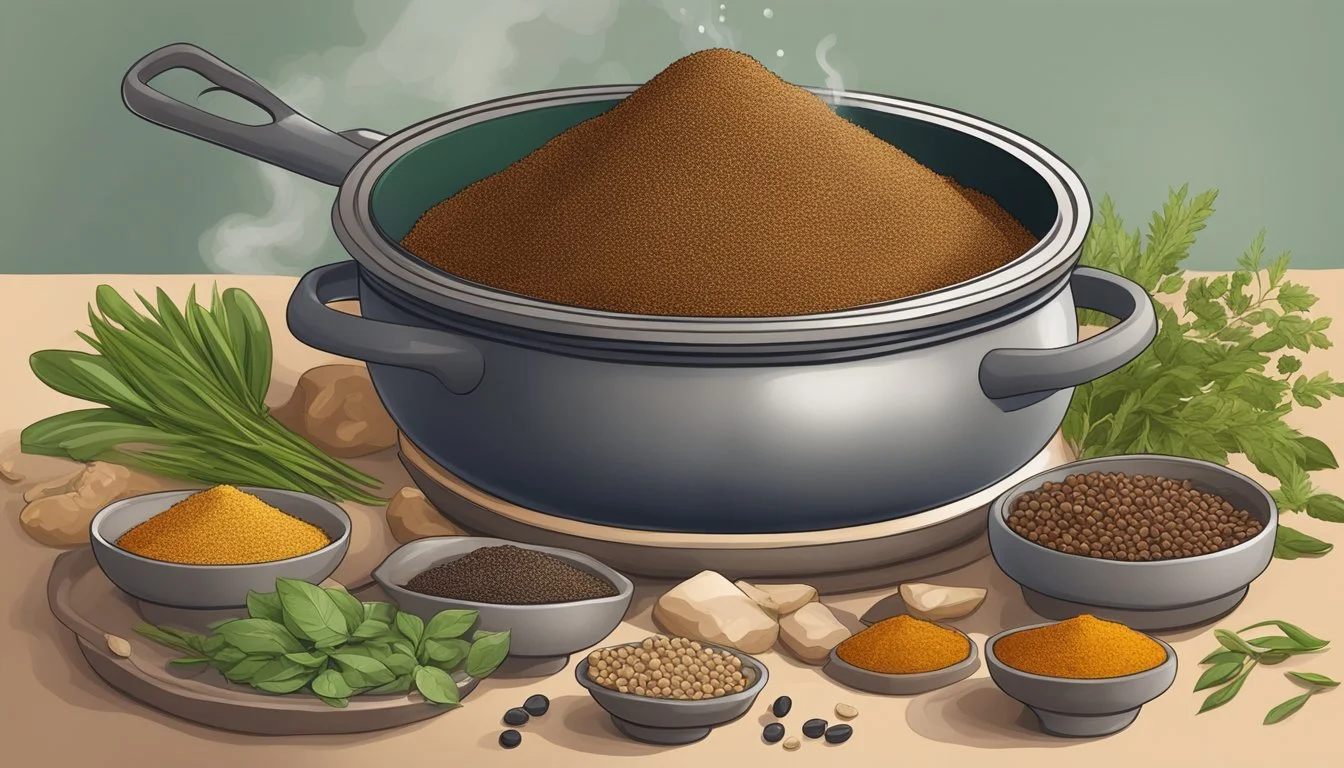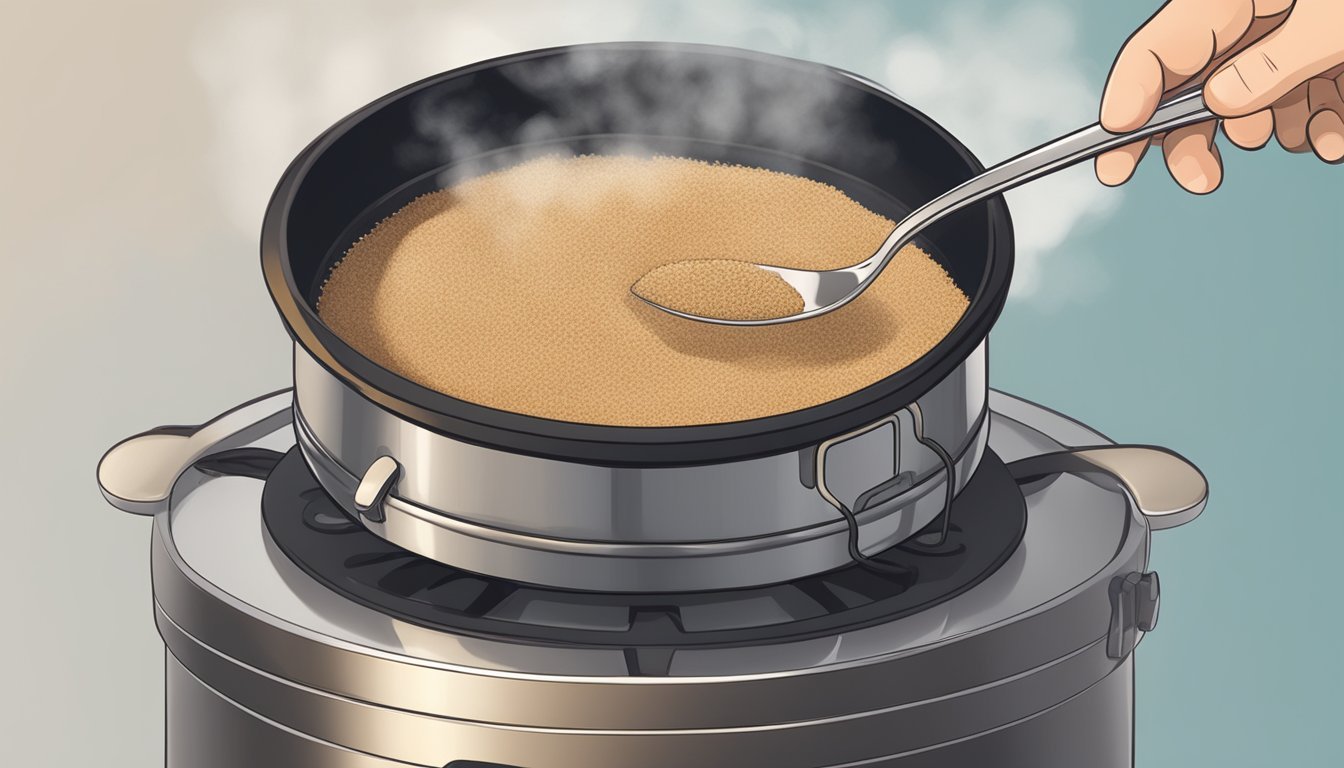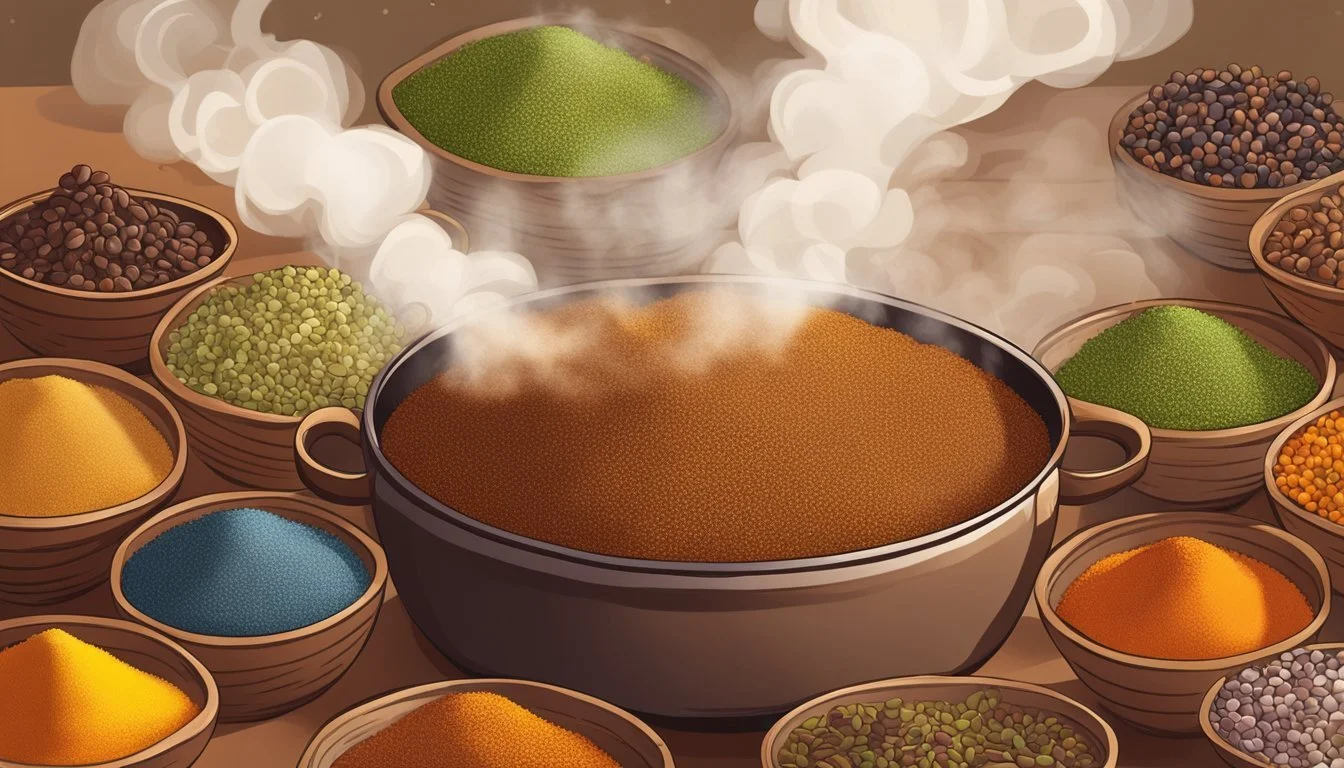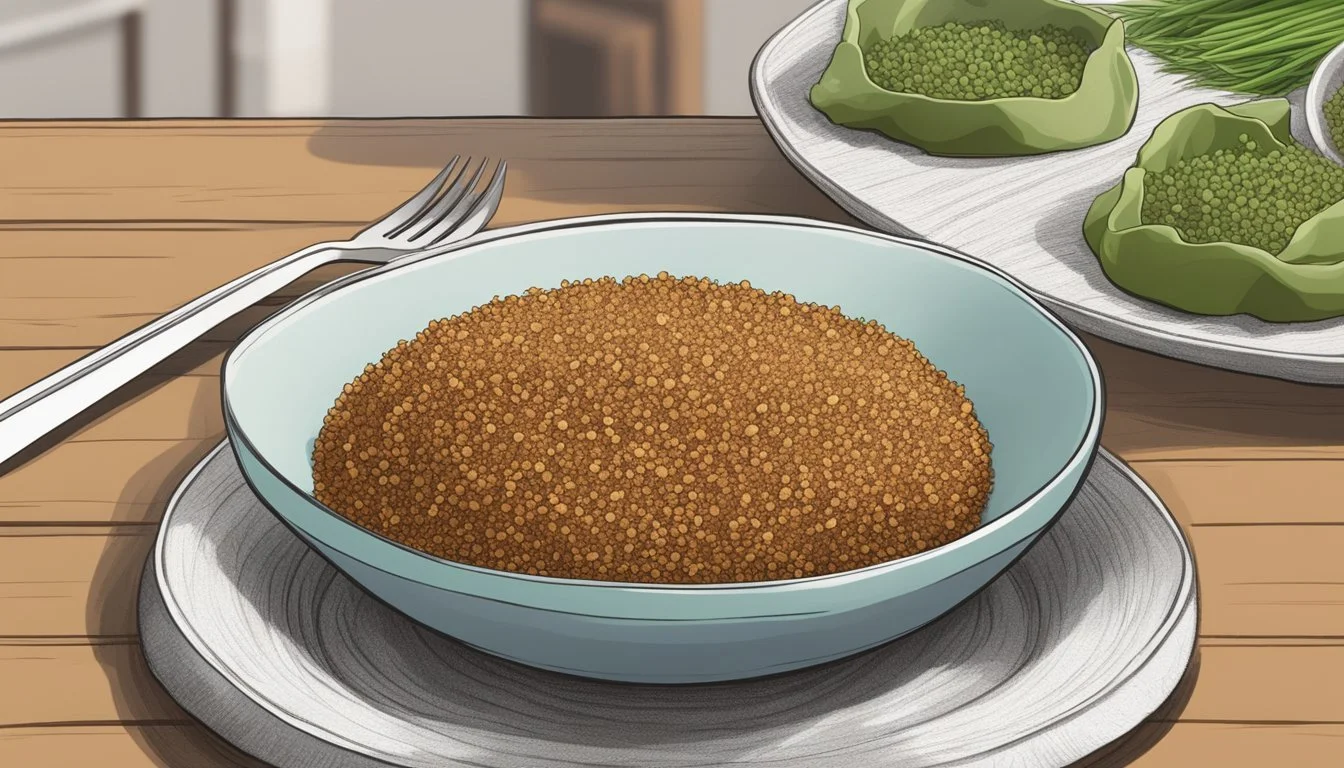Saving Overcooked Teff
Tips for Perfecting Ethiopian Grain Dishes
Teff, an ancient grain native to Ethiopia, holds a prominent place in the country's culinary heritage, particularly in its role as the primary ingredient in injera—a sourdough-risen flatbread with a unique, slightly spongy texture. Apart from injera, teff is also used in a variety of other Ethiopian grain dishes, valued not only for its distinctive flavor but also for its nutritional benefits. Packed with protein, fiber, and minerals, teff is a gluten-free grain that has gained popularity worldwide as a health-conscious alternative to traditional wheat flours.
However, preparing teff-based dishes can sometimes be a challenge, especially when it comes to achieving the right consistency. Overcooking teff can lead to dishes losing their lightness and texture, causing them to become dense and less appealing. The art of saving overcooked teff is thus an essential skill for cooks who want to ensure that all the nutritive value and effort involved in preparing these dishes do not go to waste.
In the face of overcooking, there are several techniques that can be employed to rescue the teff and still provide a delicious, nutritious meal. Understanding how to correct texture and moisture levels, or how to repurpose the grain into new dishes, can turn a potential cooking mishap into a culinary save. These methods allow cooks to remain confident in using this versatile grain while preserving the traditional qualities and significant health benefits that have made Ethiopian grain dishes a vital component of their cuisine.
Understanding Teff and Its Culinary Uses
Teff is a nutritious ancient grain from Ethiopia and Eritrea, known for its gluten-free property and versatile culinary applications ranging from traditional Injera to modern gluten-free products.
Teff: The Ancient Ethiopian Grain
Teff (Eragrostis tef) is a tiny whole grain native to the Horn of Africa, particularly Ethiopia and Eritrea. It has been a staple in Ethiopian cuisine for thousands of years. This ancient grain is gluten-free and packed with protein, making it a popular choice for diverse diets. Despite its small size, teff's nutritional punch is mightier than its weight might imply, carrying a high content of fiber, iron, and calcium.
Traditional and Modern Preparation of Teff
Traditionally, teff is ground into teff flour to make Ethiopia's national dish, Injera—a sour fermented flatbread that accompanies a variety of dishes. The preparation of Injera involves mixing teff flour with water and allowing it to ferment, resulting in a tangy flavor. Modern culinary uses of teff extend beyond bread; it is used to make pancakes, wraps, and various gluten-free baked items. Teff's fine grain properties allow it to be easily incorporated into different recipes, either as a flour or as cooked whole grains.
Varieties of Teff: White and Brown
There are two primary varieties of teff: white and brown. White teff is generally milder in flavor and often preferred for making the traditional Injera bread. On the other hand, brown teff possesses a nuttier, earthier taste and may be used in a pilaf or added to soups and stews. Both types provide the same nutritional benefits and can be used interchangeably depending on personal taste preferences and the desired outcome of the dish.
Health Benefits of Teff
Teff is a gluten-free grain with a remarkable nutritional profile, making it a favorite among those with celiac disease and anyone looking for a nutritious boost in their diet. Here are some specifics about its health benefits and dietary importance.
Nutritional Profile of Teff
Teff is a rich source of protein, essential for muscle development and repair. It is also high in dietary fiber, which aids digestion and helps maintain a healthy weight. Its profile includes an impressive array of vitamins and minerals, making teff a highly nutritious whole grain. Notably, it is an excellent plant-based source of calcium for healthy bones and teeth.
Protein: An excellent plant-based protein source, making it ideal for vegetarian and vegan diets.
Fiber: High fiber content contributes to satiety and supports digestive health.
Gluten-Free Properties Beneficial for Celiac Disease
For individuals with celiac disease, teff offers a safe and nutritious alternative to wheat, barley, and rye, which contain gluten. The absence of this allergenic protein in teff allows those affected by this autoimmune disorder to enjoy a diverse diet without the inflammation and digestive distress that gluten can cause.
Gluten-Free: Naturally free from gluten, teff is a healthy choice for people with gluten intolerance or celiac disease.
Vitamins and Minerals Abundant in Teff
Teeming with essential vitamins and minerals, teff contributes to overall nutritional status. It is particularly high in iron, which is crucial for oxygen transport in the blood and can help prevent anemia. Additionally, teff boasts significant levels of magnesium, zinc, manganese, and copper, all of which play vital roles in various bodily functions, including the immune response, enzymatic reactions, and metabolism. Lastly, it provides a good amount of potassium, which regulates heartbeat and blood pressure.
Minerals:
Calcium: Supports bone structure and health.
Iron: Important for blood health and energy levels.
Zinc: Aids in immune function and healing.
Manganese & Copper: Essential for several body processes, including support of the nervous system.
Taken together, the well-rounded nutritional benefits of teff contribute to its status as a nutritious powerhouse in a well-balanced diet.
Cooking Techniques for Perfect Teff Dishes
Mastering the cooking techniques for teff dishes ensures that the grain's nutritional value is preserved while maximizing its naturally nutty and sweet flavors. Consistency, cookware, temperature control, and proper ingredient measures vastly influence the end product's texture and taste.
Preventing and Fixing Overcooked Teff
Preventing Overcooking: To prevent overcooking teff, one must adhere to the correct water-to-grain ratio—typically a 3 to 1 ratio is recommended. Teff should be brought to a boil and then simmered for about 20 to 30 minutes or until the water is absorbed.
Fixing Overcooked Teff: If teff is overcooked, it becomes mushy. To salvage it, spread the grain onto a baking sheet and place it in a warm oven so the excess moisture can evaporate. Stir occasionally for an even drying process.
Creating Fluffy and Flavorful Teff Preparations
For a fluffy teff dish, it's essential to:
Measure the water precisely.
Simmer on low heat after boiling.
Let the teff sit covered for a few minutes after cooking to allow steam to continue the cooking process gently.
To introduce flavor into teff dishes, consider:
Adding a pinch of salt, reducing the need for additional sodium later.
Incorporating sweet potato for a naturally sweet dimension.
Employing a fermentation process for teff batter, which enriches the texture and imparts a slight tang, ideal for homemade flatbread like injera.
Cookware and Temperature Control
Choosing the Right Cookware:
Use a non-stick skillet for teff-based flatbreads, ensuring an even heat distribution.
For teff porridge or similar breakfast dishes, a heavy-bottom pot is recommended to prevent sticking.
Managing the Temperature:
Flatbread: Preheat the skillet and maintain a medium heat to avoid burning the dough.
Porridge: Start high to bring to a boil, then reduce to a simmer, keeping the lid on to maintain consistent heat.
Pancakes: Maintain a moderate temperature so that the inside cooks through without the exterior becoming too dark.
Through attentive adherence to these techniques, teff dishes can be prepared to a high standard, showcasing their inherent flavors and textures.
Alternative and Innovative Recipes with Teff
Teff, an ancient grain from Ethiopia, is versatile and nutritionally rich, providing gluten-free alternatives and a nutty flavor to various dishes. This section explores innovative ways in which teff can be utilized in everyday recipes, from traditional Ethiopian flatbread to creative breakfast items.
Ethiopian Flatbread: Injera and Beyond
In Ethiopia, teff is traditionally used to make Injera, a spongy and tangy flatbread. However, one can go beyond Injera by experimenting with teff pancakes or even teff muffins. For teff pancakes, simply combine teff flour with water, a pinch of salt, and a bit of baking soda to add fluffiness. Muffins can be made by incorporating teff flour into the standard muffin recipe, resulting in a healthier, fiber-rich version with a deep, nutty flavor.
Gluten-Free Options: Teff in Cakes, Pasta, and More
Teff flour is an excellent option for gluten-free baking. Its rich flavor and fine texture make it ideal for cakes, cookies, and even pasta. For a delicious gluten-free cake, one can substitute teff flour for traditional flour in equal measurements, and mix with ingredients like eggs, sugar, and butter. Innovative chefs might also experiment with teff in homemade pasta, where its nutty flavor enhances the overall taste of the dish.
Creative Breakfast Ideas Using Teff
For a nutritious start to the day, teff can transform breakfast. Nutrient-packed teff crepes are a simple yet innovative option, filled with a variety of savory or sweet fillings. These crepes combine teff flour with water, eggs, and a pinch of salt, cooked thinly on a hot griddle. The result is a breakfast item that is both delicious and satisfying.
Whether it's traditional Ethiopian Injera, gluten-free baking, or a creative breakfast dish, teff offers a plethora of possibilities for cooks looking to explore alternative grain options while ensuring their dishes remain fluffy, delicious, and nutrient-dense.
Dietary Considerations and Teff
Teff is a highly nutritious ancient grain that plays a significant role in vegan and vegetarian diets, and is a suitable option for individuals managing allergies and food intolerances due to its gluten-free nature.
Teff in Vegan and Vegetarian Diets
Teff is an excellent source of protein for vegan and vegetarian diets, containing a balanced set of amino acids, which are the building blocks of protein. This grain contributes to the dietary need for high-quality plant-based proteins, which can sometimes be challenging to obtain from a meatless diet. In addition, teff is rich in minerals such as calcium, making it a beneficial addition to diets where dairy is not consumed.
Managing Allergies and Food Intolerances with Teff
For individuals with Celiac Disease or gluten intolerance, teff is a safe and nutritious alternative to traditional gluten-containing grains. Being naturally gluten-free, teff allows those with sensitivities to enjoy grain dishes without the adverse reactions. Researchers note that teff's health benefits extend beyond being safe for Celiac Disease sufferers; it also offers a wealth of nutrients crucial for overall dietary health.
Global Influence and Cultivation of Teff
Teff, an ancient grain originating from Ethiopia and Eritrea, has transcended its traditional boundaries, gaining global acknowledgment for its nutritional properties. It is now cultivated in various parts of the world.
Teff's Journey Beyond Ethiopia and Eritrea
Ethiopia is the largest producer of teff, not only utilizing it as a staple food that serves as a significant source of fiber and protein but also as a cultural heritage. Outside its origin countries, teff's cultivation has expanded to nations such as Canada, Australia, and Idaho in the United States, marking its transition into a recognized global cereal crop.
Canada: Known for its diverse agricultural activities, teff has been introduced to cater to ethnic communities and health-conscious consumers.
Australia: The grain is gaining popularity due to the increase in demand for gluten-free and nutritious food products.
Idaho, USA: With a suitable climate for warm-season crops, Idaho has become one of the spots in the United States where teff is successfully grown.
Agricultural Practices and Teff Production
Teff is a resilient crop that grows in various environments, but it thrives in the highlands as well as at sea level, expanding its potential for global cultivation. The grain requires minimal input, yet it's highly productive, making it a valuable crop for both subsistence and commercial farming.
Cultivation: Traditional farming methods in Ethiopia and Eritrea pride themselves on sustainable cultivation, contributing significantly to food security.
Production: Reported to have a farming area of 3.01 million hectares in Ethiopia, this area produces approximately 5.01 million tons of teff.
The agricultural practices evident in Ethiopia and the respective production results demonstrate teff's tremendous potential as a crop adaptable to various global climates and conditions.
Frequently Asked Questions about Teff
What is Teff?
Teff is a fine grain, often used in Ethiopian cuisine, known for its dense nutritional profile and versatility in cooking. It is naturally gluten-free and a favorite among those with celiac disease or gluten sensitivities.
How nutritious is Teff?
Teff is highly nutritious, offering a substantial amount of protein and a rich supply of fiber. Its content per 100 grams includes approximately 13.3g of protein and 8g of fiber. Teff is also a good source of vitamins and minerals like calcium.
Is Teff gluten-free?
Yes, Teff is completely gluten-free, making it a suitable grain alternative for those with gluten intolerances or celiac disease.
Can anyone be allergic to Teff?
While less common, food allergies can occur with any food, including Teff. Anyone with a known allergy should avoid it, and those unsure should consult healthcare providers.
How do you prepare Teff?
Teff grain can be boiled with water, typically using a 3 to 1 ratio of water to grain. It should simmer for 20 to 30 minutes. It can also be cooked like porridge, stirring frequently for 15 to 20 minutes until thickened.
How should you store Teff?
Teff should be stored in an airtight container in a cool, dry place. If stored properly, it can last for several months. Teff flour should also be kept in an airtight container but can be refrigerated to extend its shelf life.
Final Thoughts on Teff in Culinary Arts
Teff is a highly nutritious grain, packed with minerals and proteins, that has been a staple in Ethiopian cuisine for centuries. Its growing popularity in the global culinary scene is a testament to its versatility and health benefits. As recipe developers explore new frontiers, teff has emerged as a cherished ingredient for those committed to healthy eating and catering to varied dietary preferences.
This ancient grain has a remarkable ability to adapt to both sweet and savory dishes, making it a favorite for culinary experts. The high mineral content, including iron, calcium, and magnesium, complements a balanced diet and suits the demand for whole grain choices among health-conscious consumers.
In the culinary arts, teff's fine texture and nutritional profile offer a unique edge. Chefs and home cooks alike appreciate its ease of use in traditional Ethiopian dishes and in contemporary, global recipes. Teff flour has gained acclaim as a gluten-free option, further broadening its appeal to a range of dietary needs.
Here's a simple format to understand teff's place in the kitchen:
Nutritional Value: High in fiber, protein, and minerals
Cooking Versatility: Suitable for porridges, breads, and stews
Dietary Options: Gluten-free, whole grain, and beneficial for managing blood sugar levels
Culinary Adaptability: Integrates well with individual preferences and dietary restrictions
As teff's journey continues from the fields of Ethiopia to kitchens worldwide, it remains a powerful example of how traditional foods can find new life in modern culinary practices. The grain offers a harmonious blend of health, flavor, and cultural significance, making it an irreplaceable part of a wholesome diet.

